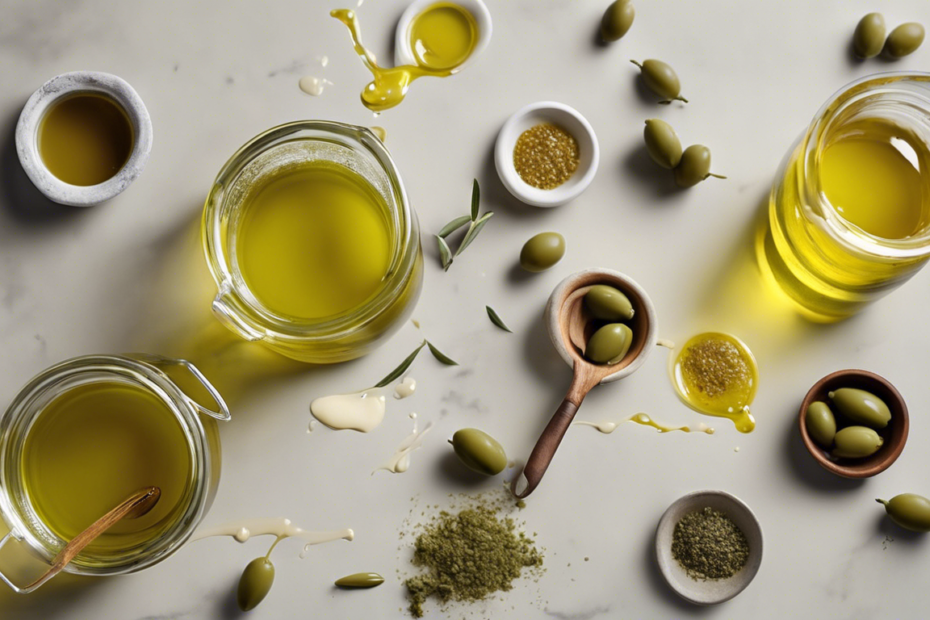Olive oil is more than just a cooking staple; it’s a flavor powerhouse that can elevate any dish.
In this guide, we’ll dive deep into the rich tapestry of olive oil flavors, exploring what makes each variety unique and how to choose the perfect drizzle for your culinary adventures.
Whether you’re a seasoned chef or a home cook looking to sprinkle some flavor into your meals, understanding olive oil profiles and how to taste them is key.
Let’s unravel the factors that influence taste and discover the art of pairing olive oil with foods for a sensational dining experience!
How to Taste and Evaluate Olive Oil
Tasting and evaluating olive oil is all about engaging your senses and enjoying the experience, so let’s keep it relaxed and fun!
Start by pouring a small amount of olive oil into a glass or a small bowl, and give it a gentle swirl to release those amazing aromas.
Take a moment to deeply inhale the fragrant notes – good olive oil can smell fruity, grassy, or even nutty, depending on the variety.
Next, take a small sip and let it coat your palate; pay attention to the olive oil flavor that unfolds.
Do you notice any bitterness or pungency?
These are often signs of freshness and quality!
Ideally, good olive oil should have a balance of fruity notes, a touch of bitterness, and a peppery finish.
If you feel a slight tickle in your throat, that’s usually a good indicator of high-quality oil.
Don’t hesitate to compare different oils, jot down your thoughts, and soon you’ll be an olive oil aficionado in no time!
Pairing Olive Oil with Foods for Maximum Flavor
When it comes to elevating your culinary creations, pairing olive oil with the right foods can unlock a whole new world of flavor.
Whether you’re drizzling a rich, peppery extra virgin olive oil over a fresh caprese salad or using a fruity, milder variety to finish off a warm bowl of pasta, the right olive oil can enhance every bite.
Imagine the sweet notes of a light olive oil complementing a piece of grilled fish, or a robust oil intensifying the earthy flavors of roasted vegetables.
Don’t shy away from experimenting—try a garlic-infused olive oil on your next slice of artisan bread or even a spicy blend sprinkled over your favorite pizza for an extra kick.
It’s all about playing around with different types and finding those combinations that make your taste buds dance.
So grab a bottle of your favorite olive oil and start exploring the delicious possibilities!
Frequently Asked Questions
What are the different flavor profiles of olive oil?
Olive oils can have a range of flavor profiles, including peppery, fruity, grassy, nutty, and herbaceous.
Each profile depends on the olive variety, ripeness, and processing methods.
What factors influence the flavor of olive oil?
The flavor of olive oil is influenced by several factors including the type of olives used, the region where they are grown, the harvesting methods, and the processing techniques.
How can I properly taste olive oil to evaluate its flavor?
To taste olive oil, pour a small amount into a cup and warm it in your hands.
Swirl it gently, inhale its aroma, and then take a small sip, letting it coat your palate.
Pay attention to the initial taste, mouthfeel, and finish.
How can I pair olive oil with different foods for the best flavor?
Pair olive oil with foods that complement its flavor profile.
For instance, fruity oils go well with salads and drizzled on fish, while peppery oils are fantastic with hearty dishes like grilled meats or roasted vegetables.
Is there a best temperature to use olive oil for cooking?
Olive oil has a smoke point of around 375°F (190°C), making it suitable for sautéing and roasting, but it’s best used at lower temperatures for drizzling raw to preserve its delicate flavors.
